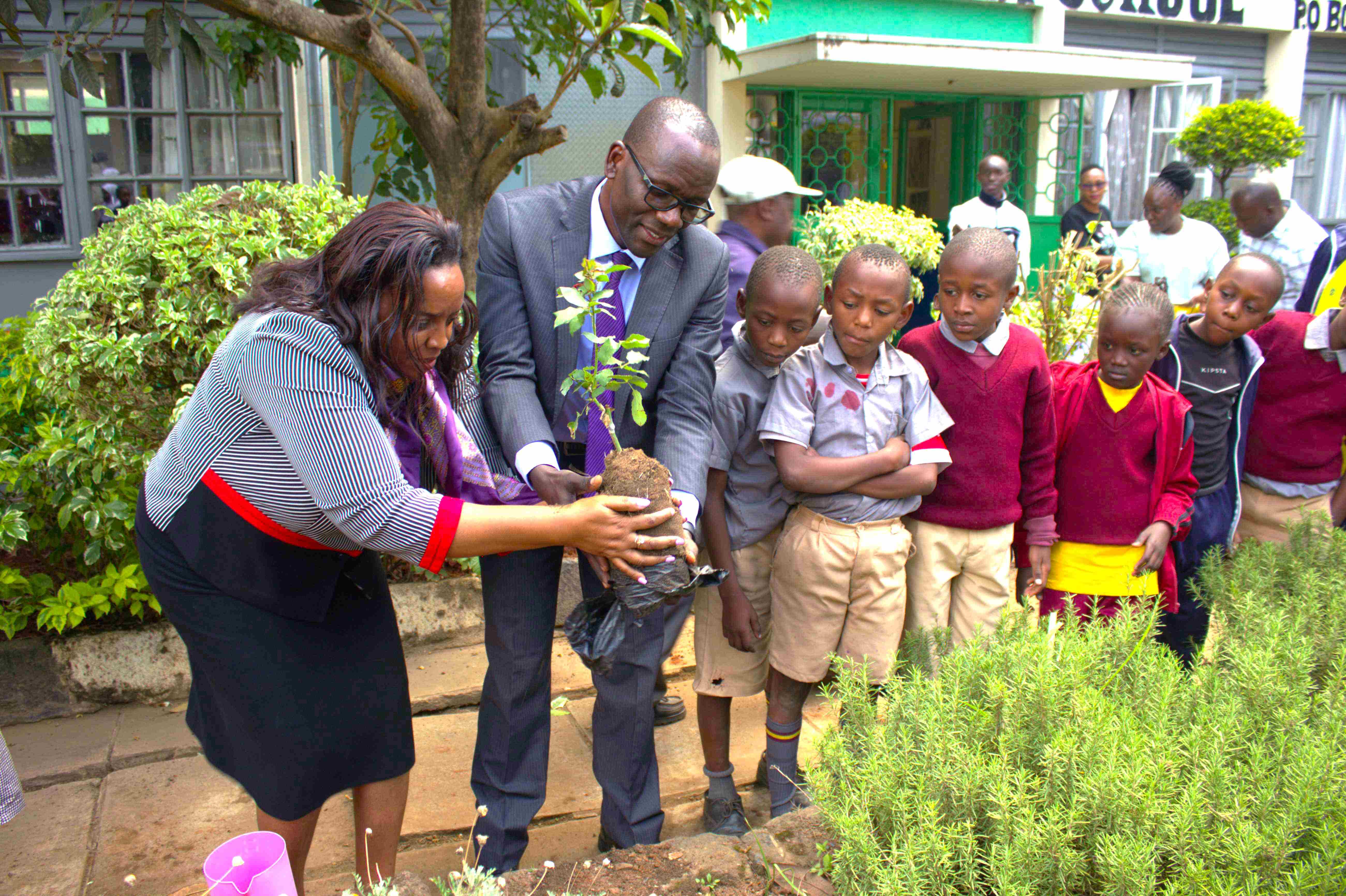
In a detailed interview with Clement Tulezi, CEO of the Kenya Flower Council (KFC), he spoke about the challenges that Kenya’s flower industry faces today, while also highlighting the significant opportunities for growth.
From climate change to sustainable practices, his insights paint a picture of an industry adapting to global shifts while striving for resilience and growth, writes Mary Mwende
Climate Change: The Immediate Threat to Water Availability and Production
Tulezi outlines how climate change has become a central concern for the flower industry, particularly its impact on water availability. Kenya’s flower farms rely heavily on stable water sources for irrigation. As droughts and erratic rainfall patterns increase, there has been an undeniable strain on the water supply.
Tulezi says, “The availability of water has become a challenge due to changing weather patterns. Flower farms need a consistent water supply, and with the increasing effects of climate change, we are seeing reduced rainfall and droughts.”
To mitigate this, Tulezi explains how farms are innovating with more efficient irrigation systems and the introduction of water-saving technologies. These innovations are not only designed to use water more efficiently but also to address the rising cost of water management, ensuring long-term sustainability. He adds, “We have embraced modern irrigation systems to reduce water wastage, and we are harvesting rainwater as an alternative source.”
Solar Energy as a Game Changer
With the increasing shifts towards sustainable practices, the Kenyan flower sector is following suit. The rising cost of electricity, largely due to the increasing prices of fossil fuels, has made energy management a top priority for flower farms. According to Tulezi, many farms are making significant investments in solar power to reduce dependence on costly electricity from the national grid.
Tulezi explains, “The cost of electricity has become unbearable for many farms, and the high fuel prices are only exacerbating the situation. As an industry, we are turning to solar power as a sustainable solution to reduce our reliance on the grid and lower energy costs. Many of our farms have adopted solar systems.”
He further elaborates that solar energy systems are now becoming a common fixture on farms. “Solar energy is helping us reduce our carbon footprint, and it’s becoming an essential part of our operations.”
The Threat of FCM
The False Codling Moth (FCM) is posing a serious threat to Kenya’s flower export industry, as the European Union tightens its phytosanitary standards. In 2024 alone, FCM-related interceptions led to a loss of KES 20 million in exports. To address this challenge, the industry has adopted a rigorous Systems Approach Protocol and the Kenya Flower Council (KFC) is calling for quicker government approval of crucial pest-control products to preserve market confidence.
Tulezi emphasized the urgency, stating, “We urge the government to expedite the registration of pest-control products to help us maintain our market share in Europe and stay compliant with the new EU regulations.”
Experts warn that if action is not taken promptly, Kenya risks losing its competitive edge to countries like Ethiopia and Colombia, which have made notable advancements in pest control and regulatory compliance.
Integrated Pest Management (IPM
The challenge of pest control remains significant for flower producers, who must balance high-quality production with sustainability standards. Tulezi details how the adoption of Integrated Pest Management (IPM) strategies has been key in controlling pests and diseases without relying heavily on chemicals.
“IPM is helping reduce the reliance on chemical pesticides, which are not only costly but also have environmental implications. We encourage farmers to use biological control methods and organic pesticides, which are more sustainable,” Tulezi says.
With increasing consumer demand for sustainable and responsibly grown flowers, KFC is spearheading initiatives that encourage more widespread adoption of IPM practices. “Sustainability is a key part of our strategy. By using IPM, we are able to meet the growing demand for environmentally friendly products while maintaining the quality of our flowers,” Tulezi adds.

Surging Freight Costs
The flower export sector is facing a crisis as freight costs have skyrocketed, with prices more than doubling since 2020. Currently, 97% of flowers are exported by air, and air freight rates have surged from USD 2.1 to 4.3 per kilogram. The situation is further exacerbated by limited cargo capacity at Jomo Kenyatta International Airport (JKIA).
KFC is urging for the licensing of additional freighters, cost reductions at JKIA, and incentives for cargo carriers to alleviate the financial pressure.
“Since November 2024, air freight costs have skyrocketed, putting a heavy strain on exporters. This burden is too much for the industry to bear without support,” said Tulezi. The CEO warned that without intervention, the escalating logistics costs could force small-scale exporters out of the market, consolidating the industry in the hands of a few large players. This would negatively impact employment and reduce the diversity of Kenya’s flower market.
Adapting to Market Shifts: Sea Freight versus Air Freight
Traditionally, Kenya’s flower export market has relied heavily on air freight due to its speed and ability to maintain flower freshness. However, the sector is experiencing a notable shift towards sea freight. Tulezi explains that the increased cost of air freight, particularly driven by soaring fuel prices, has forced many exporters to look at alternative methods.
“Air freight has always been the preferred method due to its ability to maintain the freshness of flowers. However, with the rising costs of fuel and air freight services, many exporters are exploring sea freight as a more affordable option,” says Tulezi.
While sea freight offers significant cost savings, it introduces new challenges, particularly in terms of flower preservation. Longer transit times can affect the quality and freshness of the flowers, which are vital to maintaining the reputation of Kenya’s floriculture sector.
“Sea freight is a more affordable option, but the challenge lies in the longer transport time, which can impact the flowers’ freshness. We are investing in better cold chain systems to maintain the quality during longer journeys,” Tulezi explains.
Taxation and Regulatory Challenges
One of the most pressing issues facing Kenya’s flower industry is the impact of taxation on the export sector. Tulezi highlights that the country’s tax regime, including VAT and export duties, has become an impediment to competitiveness. The high taxes on flower exports erode profit margins and make Kenyan flowers less attractive in international markets.
“The current tax regime is making it difficult for Kenyan flower exporters to remain competitive in the global market. High export duties and VAT on agricultural products are eroding our margins, and this puts us at a disadvantage compared to other flower-exporting countries,” Tulezi explains.
KFC, is actively engaged with government bodies to push for tax reforms. He notes, “We are lobbying the government to reconsider the VAT on agricultural exports, which would significantly help our competitiveness. The government’s role in reducing tax burdens on the sector is critical for growth.”
Shifting Employment Patterns
As with many industries globally, Kenya’s flower sector is experiencing shifts in its workforce dynamics due to increasing automation and technological advancements. Tulezi points out that while the flower industry remains a crucial source of employment in rural areas, especially for women, the demand for more skilled workers is growing.
Farms are increasingly adopting automated systems for planting, harvesting, and packaging flowers, reducing the need for manual labour. This shift necessitates a re-evaluation of the skills required within the sector. KFC is working with various stakeholders to ensure that the workforce is adequately trained for the evolving demands of the industry. Tulezi comments, “We are working closely with training institutions to ensure the workforce is prepared for the technological shifts in the sector. Automation should not lead to job losses but rather provide opportunities for better, higher-skilled roles.”
Expanding Global Markets
While Europe remains Kenya’s biggest export destination, local flower companies are diversifying their markets. Asia, the Middle East, and North America have shown increased demand for Kenyan flowers, prompting exporters to explore new trade agreements and logistics solutions. With more direct flights to key markets, Kenyan flowers are reaching consumers faster and fresher than ever.
“We are expanding beyond traditional markets and tapping into new opportunities. The demand for Kenyan flowers in China, Japan, and the UAE is growing, and we are working on strategic partnerships to strengthen our footprint,” Tulezi stated.
Despite the challenges the flower industry faces, Tulezi remains optimistic about its future. He believes that through innovation, technological adoption, and strong collaboration between the public and private sectors, Kenya’s flower industry will continue to thrive. He points to the increasing use of artificial intelligence and data analytics in farm management as an example of how the industry is embracing digital tools to increase efficiency and productivity.
“Artificial intelligence and data analytics are transforming how we manage farms. These tools are helping us improve productivity, predict trends, and make better decisions,” Tulezi remarks.
